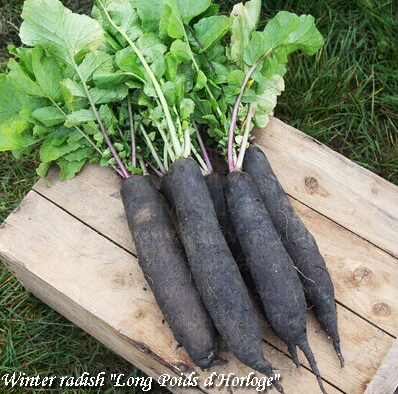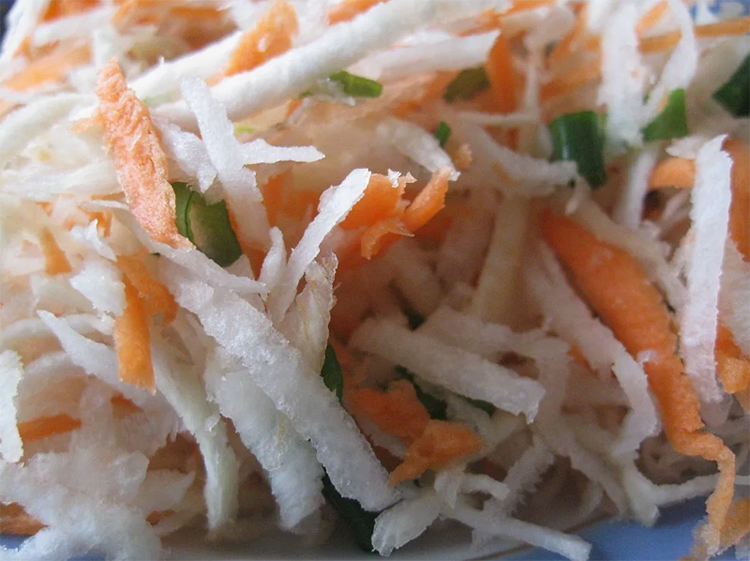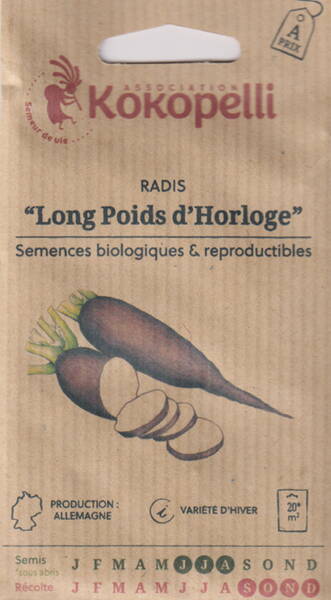Healing and fast-growing!
A mid-season variety that combines high commercial qualities, increased productivity, rapid growth and healing properties.
The period from full germination to the beginning of technical maturity is 60-70 days. Root crops are aligned, do not form branches, do not crack, cylindrical in shape with black skin and beautiful white flesh: weight 170-210 g and length up to 20 cm.
The flesh is dense, crispy, juicy, slightly spicy taste (closer to radish). Ideal for salads, stores well and does not lose its beneficial qualities for a long time.
Sowing: IV - VI.
Transplanting: V - VII.
Harvest: VIII - X.

Agrotechnics.
Radish prefers light soils rich in organic matter. Soil preparation begins in the fall, adding humus or compost, as well as mineral fertilizers. Sowing is carried out in early spring. The seeds are sown in furrows located at a distance of 35-40 cm from each other (sow dry seeds).
Sowing depth is 1-2 cm. The seeds begin to germinate at a temperature of +2 °C.
The seedlings are thinned out, leaving about 10 cm between the plants. Radish seedlings should be periodically treated with a mixture of tobacco dust and ash in a ratio of 1:1. Further care consists of loosening and regular watering. Radish is fed three times during the entire growing season.
The crop is cold-resistant, withstands light frosts. Placed on fertile, well-cultivated, neutral, moist soils.
Attention: radish develops normally and forms good root crops only "if you keep a distance" - it should spread its leaves wide and freely and lay them on the bed.
When planted densely, the plants interfere with each other, their rosettes are forced to stand upright and the radish begins to trunk and become woody (leaving too much space between radish plants is also not worth it - otherwise you will have too large root crops, but to the detriment of their quality). The optimal final distance after thinning is 10-15 cm (depending on the variety).
Radish roots protruding from the ground are constantly sprinkled with earth during growth - then there will be fewer voids, hardening and black folds in the pulp. To get a high yield of radish, systematic abundant watering is necessary, ensuring constant soil moisture.
Important: for black radish intended for winter storage, the tops should not be cut off, but twisted off.
* Black Radish with cranberry juice.
Chop the radish, add cranberry juice, sunflower oil, and salt. Let stand for half an hour and serve.
100 g radish, 2 tbsp cranberry juice, 1 tbsp sunflower oil, salt to taste.
* Black Radish salad.
1. Peel the carrots, apples, and radish, grate on a coarse grater, put in a bowl, add shredded cabbage, parsley, and season with salad dressing.
For the salad: 2-3 carrots, 2 apples, a small radish, cabbage, herbs, parsley to taste.
For the dressing: 2 tbsp sunflower oil, 1 tbsp table vinegar or lemon juice, sugar, salt, pepper to taste.
2. Peel, wash and grate the radish. Chop and mix fresh cucumbers with the radish. Salt and add diluted citric acid or lemon juice. Place the salad in a mound on a plate, add chopped green onions, pour sour cream and sprinkle with finely chopped dill.
1 radish, 1-2 cucumbers, 3 tbsp sour cream, 40 g green onions, 0.5 tbsp 2% citric acid solution or lemon juice, dill, salt - to taste.

* Black Radish with egg.
Peel the radish, put it in cold water for 15 minutes, and then grate. Add the grated yolk of a boiled egg, salt and mix. Pour sour cream over the finished dish, serve with pancakes or black bread.
2 radishes, 2 eggs, 5 tablespoons sour cream, salt to taste.












